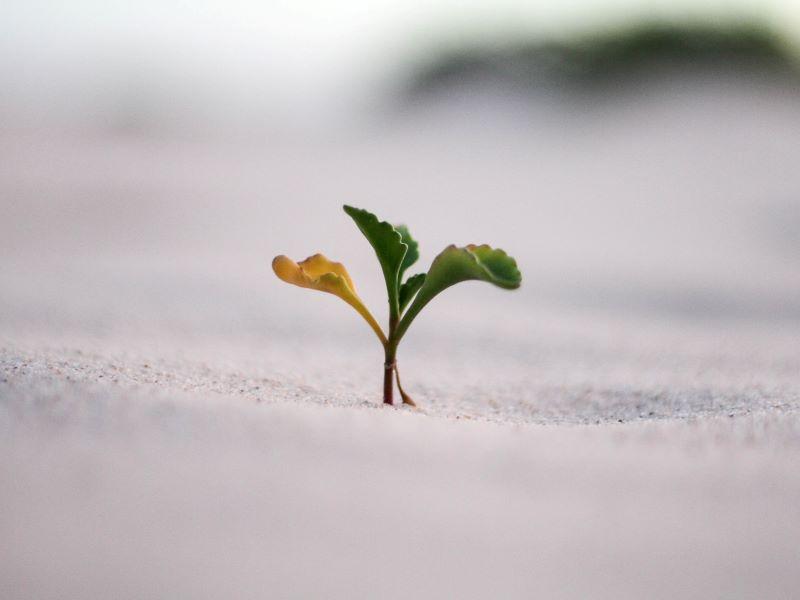
In the cold, unforgiving environment of higher education, embrace the promise of spring
As educators, we often find ourselves facing challenges that can feel like enduring long winters. From dealing with critical feedback and navigating peer reviews, to contemplating the significance of Rate My Professor scores and setting boundaries for our well-being, these are all elements that can shape our journeys through academia.
- Set sail on the choppy waters of grant proposals with the 3 Gs approach
- Four ways to achieve a better work-life balance in academia
- How resetting motivations can help faculty achieve better teaching and well-being during challenging times
The harshness of winter is like the sometimes unforgiving environment of higher education. We meet moments of self-doubt, criticism and setbacks that can feel like biting winds against our resolve. However, just as winter gives way to the promise of spring, so too can we cultivate resilience and find moments of growth and renewal in our roles as educators.
Embrace feedback
One of the key aspects of weathering the storm in academia is learning to embrace and navigate feedback effectively. Just as the trees shed their leaves in winter, letting go of what no longer serves them, we too must learn to sift through feedback, separating constructive criticism from mere noise. Instead of viewing feedback as a personal attack, we can reframe it as an opportunity for growth and improvement. By embracing a growth mindset, we allow ourselves to learn and blossom, much like the flowers do in spring.
Navigate peer reviews
Reading peer reviews can be a task as daunting as traversing icy terrain in the depths of winter. However, by approaching peer reviews head on, with an open mind and a willingness to collaborate, we can turn these experiences into valuable learning opportunities. Constructive feedback from peers can provide fresh perspectives and insights, helping us to refine our teaching methods and scholarly contributions.
Don’t let external ratings define you
In the digital age, platforms such as Rate My Professor can sometimes feel like chilly gusts of wind, affecting our confidence and sense of self-worth. While it is essential to consider student feedback and strive for excellence, it is equally vital not to let external ratings define our value as educators. Instead, we can focus on fostering meaningful connections with our students, creating engaging learning experiences and continuously seeking ways to improve our teaching practices.
Set boundaries
Setting boundaries is another crucial aspect of maintaining resilience and well-being in academia. Just as plants require the right conditions to thrive, we too must set boundaries to protect our time, energy and mental health. Whether it is carving out dedicated time for self-care, prioritising tasks based on importance or learning to say no when necessary, setting boundaries allows us to flourish personally and professionally.
Develop rapport
As educators navigating the changing seasons of academia, fostering meaningful connections with our students is paramount. One practical tip for cultivating these connections is to embrace active listening and empathy. By truly listening to our students’ concerns, questions and perspectives, we show that we value their input and care about their academic journeys. Empathy allows us to understand their challenges and motivations, creating a supportive learning environment where students feel seen and heard.
Growth mindset
Cultivating a growth mindset can significantly affect our approach to teaching and learning. Instead of viewing setbacks or challenges as roadblocks, a growth mindset encourages us to see them as opportunities for learning and development. One way to foster a growth mindset is through continuous self-assessment. By regularly reflecting on our teaching practices, seeking feedback from peers and students, and embracing a willingness to learn and adapt, we model the importance of lifelong learning and resilience for our students.
Reap what we sow
In the words of the entrepreneur and author Jim Rohn: “It is the promise of spring that as we sow, so shall we also reap.” Each challenge we overcome, each lesson we learn and each boundary we set contributes to our growth and resilience as educators. Just as spring brings forth new life and possibilities, so too can we find moments of inspiration, connection and transformation in the evolving landscape of higher education.
By embracing the promise of spring within ourselves, we can navigate the cold, hard world of academia with resilience, grace and a steadfast commitment to learning and growth.
John Sinclair is a part-time faculty member at the MBA programme at CSU Global.
If you would like advice and insight from academics and university staff delivered direct to your inbox each week, sign up for the Campus newsletter.




